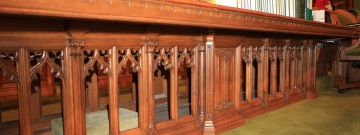Chapter 19 Committees of the Whole

There is as little sense of reality in appointing a committee of sixty members as there is in having a Committee of the Whole of 265: it is hopeless to expect a committee of such size to accomplish any useful work.
WILLIAM FOSTER DAWSON
(Procedure in the Canadian House of Commons, p. 209)
A Committee of the Whole is the entire membership of the House of Commons sitting as a committee.1 Each time the House resolves itself into a Committee of the Whole to deliberate on a specific matter, a new committee is created. Once that committee has completed its business, it ceases to exist. Over the span of a session, many Committees of the Whole can be created on an ad hoc basis.
A meeting of a Committee of the Whole is held in the House of Commons Chamber itself and is presided over by the Deputy Speaker, as Chair of Committees of the Whole, or by the Assistant Deputy Speaker and Deputy Chair of Committees of the Whole or Assistant Deputy Speaker and Assistant Deputy Chair of Committees of the Whole. Whoever is presiding sits at the Table in the Clerk’s chair, while the Speaker’s chair remains vacant. The Mace is removed from the top of the Table to signal that the House itself is no longer in session; it rests on the lower brackets at the end of the Table during the entire time that the House sits as a Committee of the Whole.
Since the membership of a Committee of the Whole is identical to that of the House, one might expect the rules in both forums to be the same. While there are similarities, the rules in a Committee of the Whole are less formal than those which apply when the House is in session. For example, Members may speak more than once on any item2 and need not stand in their place when they have the floor.
“The function of a Committee of the Whole is deliberation, not enquiry”.3 Unlike standing committees which have the authority to initiate studies of continuing concern to the House, a Committee of the Whole may consider only questions and bills which the House decides should be dealt with in this particular forum.
At one time, the House sat frequently as a Committee of the Whole to examine the estimates,4 appropriation bills5 and all taxation bills6 at the committee stage. In addition, most bills that had received a second reading were referred to a Committee of the Whole for consideration and review. Relatively speaking, Committees of the Whole are now used less frequently to consider legislation and more frequently for special debates.
Today, the vast majority of bills are referred to standing or legislative committees, although the Standing Orders still provide for a Committee of the Whole to examine appropriation bills.7 In addition, certain bills are referred by special order or by unanimous consent to a Committee of the Whole for consideration. In such cases, however, the predominant reason for doing so is to expedite passage of the legislative proposal.8
Over the past few years, however, Committees of the Whole have become popular once again, primarily because they provide a forum for special debates, such as take-note debates and the consideration of the main estimates.9 Members consider a Committee of the Whole to be an opportunity for a discussion that is less formal than a debate held in the House.10
This chapter will examine the role of Committees of the Whole and discuss the rules and practices pertaining to proceedings in a Committee of the Whole.